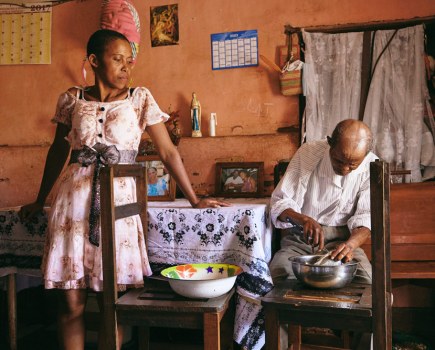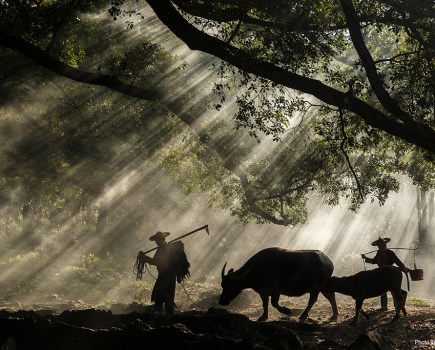
Memorial to a species, © Brent Stirton/Wildlife Photographer of the Year 2017
The long anticipated winner of the Wildlife Photographer of the Year 2017 competition has been revealed.
Photojournalist Brent Stirton has won the prestigious title for his powerful image, ‘Memorial to a species’, of a shot and de-horned black rhino in South Africa’s Hluhluwe Imfolozi Game Reserve.
His arresting image has beaten almost 50,000 entries from 92 countries, which show the astonishing diversity of life on Earth.
Competition judge Roz Kidman Cox said: “To make such a tragic scene almost majestic in
its sculptural power deserves the highest award.
“There is rawness, but there is also great poignancy and therefore dignity in the fallen giant. It’s also symbolic of one of the most wasteful, cruel and unnecessary environmental crimes, one that needs to provoke the greatest public outcry.”
Black rhinos are a critically endangered species due to poaching and the illegal international trade in rhino horn.
Judge and former winner Jasper Doest told Amateur Photographer: “We talked long about this and tears were shed during the debate, that took several hours.
“In the end we decided to vote and to our surprise we came to a unanimous decision, which still brings me to tears when I think of it.
“I think all jury members this year saw it as their responsibility to fight for positive change in this world.”

The good life, © Daniël Nelson/Wildlife Photographer of the Year
Daniël Nelson took the award for Young Wildlife Photographer of the Year 2017 with this photo of a young western lowland gorilla from the Republic of Congo.
In his compelling portrait, Daniël captured the inextricable similarity between these wild apes and humans, alongside the importance of the forest on which they depend.
Winners were selected in 16 categories – all of which can be seen in our gallery below.
The exhibition opens at the Natural History Museum on October 20, 2017 before touring
across the UK and internationally to locations such as Canada, Spain, the USA, Australia
and Germany.
The next Wildlife Photographer of the Year competition opens for entries on
October 23, 2017.
Giant Gathering – Winner 2017, Behaviour: Mammals
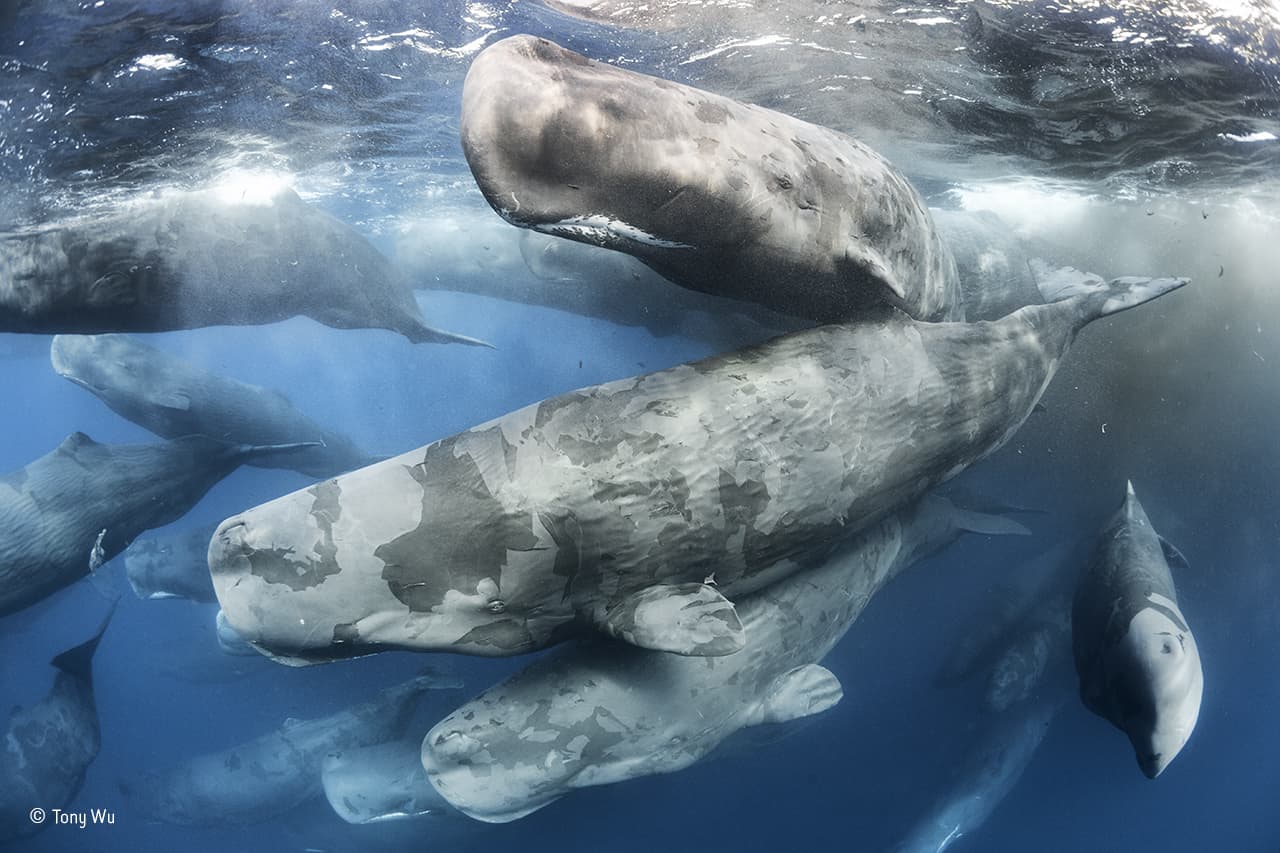
© Tony Wu /Wildlife Photographer of the Year 2017
Dozens of sperm whales mingled noisily off Sri Lanka’s northeast coast, stacked as far down as Tony could see. Some two thirds of the sperm whale population was wiped out during the peak of industrialised whaling in the twentieth century. But commercial whaling was banned in 1986, and this kind of major gathering could be ‘a sign that populations are recovering’, says Tony.
Canon EOS 5D Mark III, 15mm f/2.8 lens, 1/250sec at f/6.3, ISO 800, Zillion housing + Pro-One optical dome port
Contemplation – Winner 2017, Animal Portraits
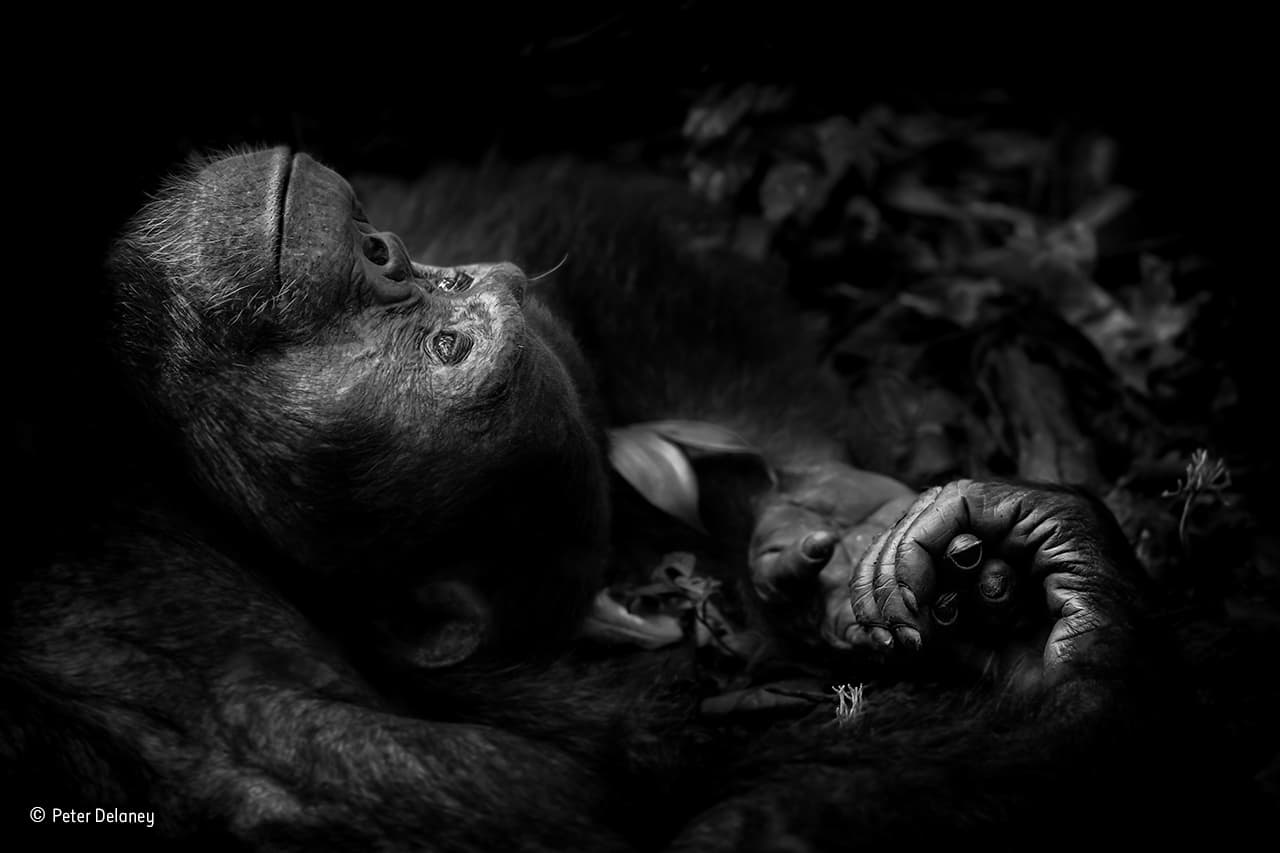
© Peter Delaney/Wildlife Photographer of the Year 2017
Totti couldn’t have tried harder. For more than an hour, he posed, gestured and called to entice one particular female down from the canopy, but nothing worked. It was only when he finally flopped down, worn out with unrequited love, that Peter had his chance. “He lay back, hands behind his head, and rested for a moment, as if dreaming of what could have been,” Peter said.
Fujifilm X-T1, 50–140mm, 1/75sec at f/2.8 (–1.3 e/v), ISO 3200
Crab surprise – Winner 2017, Behaviour: Invertebrates

© Justin Gilligan/Wildlife Photographer of the Year 2017
Out of the blue, an aggregation of giant spider crabs the size of a football field wandered past. Justin was busy documenting a University of Tasmania kelp transplant experiment and was taken completely by surprise. “About 15 minutes later, I noticed an odd shape in the distance, moving among the writhing crabs,” said Justin. It was a Maori octopus that seemed equally delighted with the unexpected bounty.
Nikon D810, 15mm f/2.8 lens, 1/100sec at f/14, ISO 400, Nauticam housing, two Ikelite DS161 strobes.
Polar pas de deux – Winner 2017, Black and white

© Eilo Elvinger/Wildlife Photographer of the Year 2017
From her ship, anchored in the icy waters off Svalbard, in Arctic Norway, Eilo spotted a polar bear and her two-year-old cub in the distance, slowly drawing closer. Mirroring each other, with back legs pressed together (cub on the right), they tasted the stained snow in synchrony. Mindful of the species’ shrinking habitat – climate change is reducing the Arctic sea ice on which the bears depend – Eilo framed her shot tightly, choosing black and white to ‘reflect the pollution as a shadow cast on the pristine environment’.
Canon EOS-1DX, 200–400mm f/4, 1/640sec at f/9 (+0.7 e/v), ISO 6400
Stuck in – Winner 2017, 11-14 years old
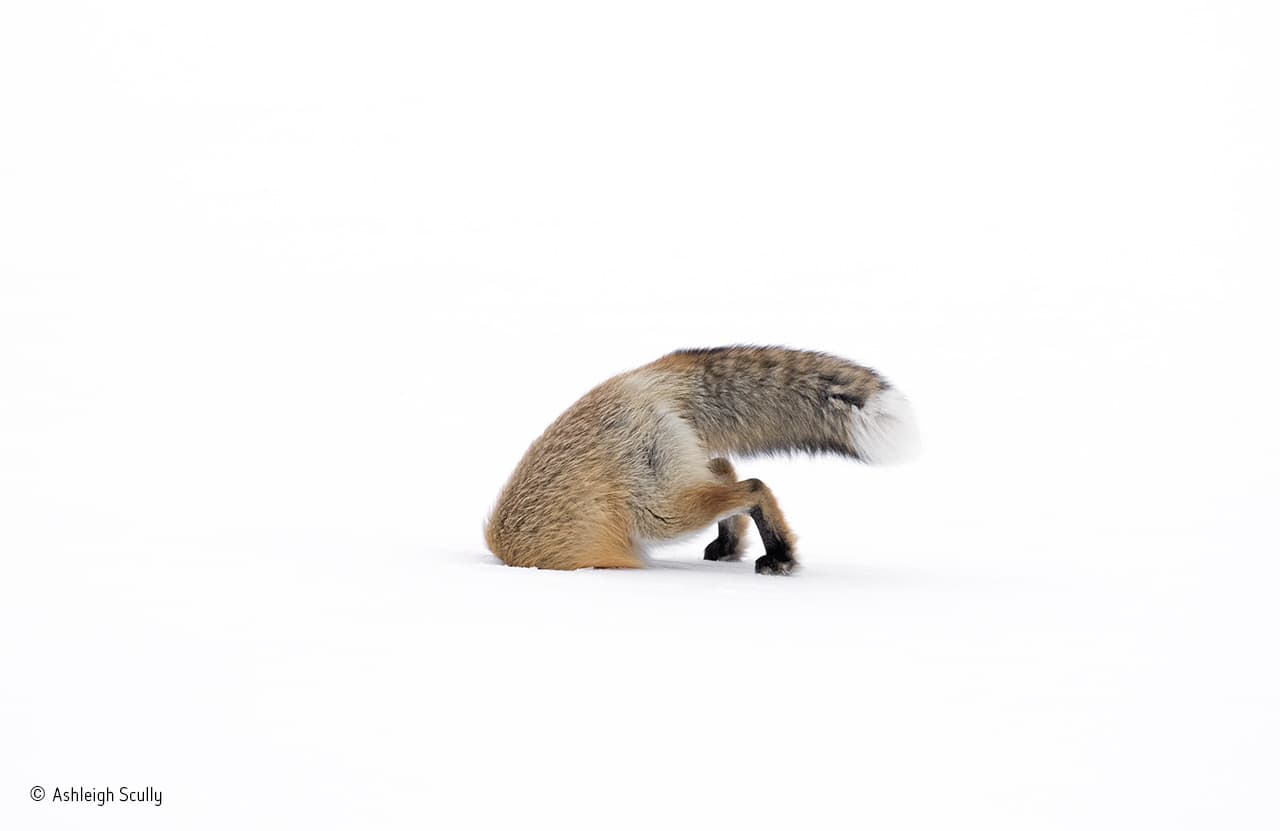
© Ashleigh Scully/Wildlife Photographer of the Year 2017
Deep snow had blanketed the Lamar Valley in Yellowstone National Park, and the day was cold and overcast. This female American red fox was hunting beside the road, stepping quietly across the crusty surface of the snow. “It was funny to see but also humbling to observe how hard the fox had to work to find a meal. I really wanted her to be successful,” said Ashleigh. Unfortunately she wasn’t.
Canon EOS 7D Mark II, 500mm f/4, 1/640sec at f5.6 (+1.7 e/v); ISO 1000
The ancient ritual – Winner 2017, Behaviour: Amphibians and Reptiles
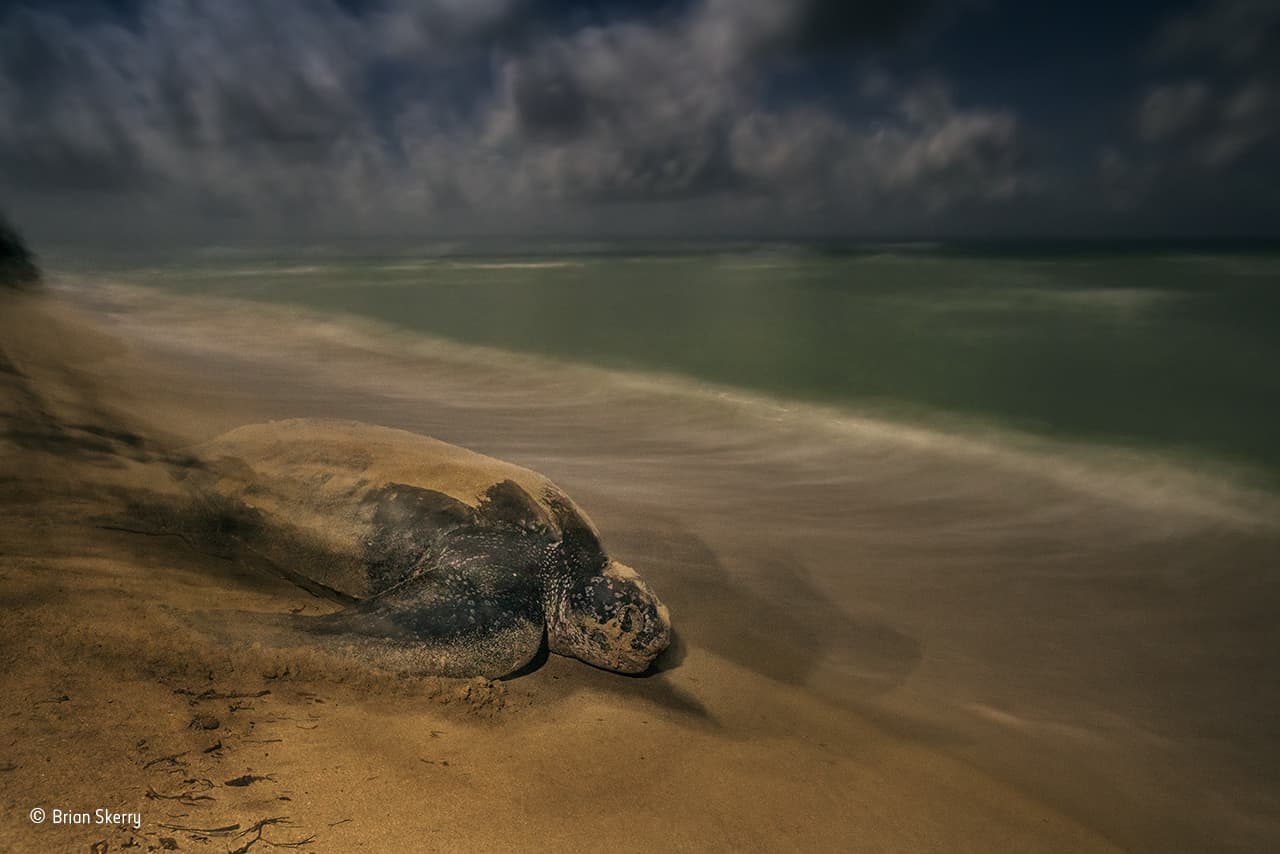
© Brian Skerry/Wildlife Photographer of the Year 2017
Like generations before her, the leatherback turtle shifts her considerable weight with her outsized, strong front flippers and moves steadily back to the ocean. Females return to the shores where they themselves hatched to lay their own eggs at the Sandy Point National Wildlife Refuge on St Croix, in the US Virgin Islands.
Nikon D5, 17–35mm f/2.8, 10sec at f/8, ISO 1600, Nikon flash at 1/64th power + tungsten gel, Nikon remote release
The ice monster – Winner 2017, Earth’s Environments

© Laurent Ballesta/Wildlife Photographer of the Year 2017
Laurent and his expedition team had been silenced by the magnitude of the ice blocks – mountainous pieces of the ice shelf – awed in the knowledge that only 10% of their volume is ever visible above the surface. The dive team were working out of the French Dumont d’Urville scientific base in east Antarctica.
Nikon D4S, 13mm f/2.8 lens, 1/30 to 1/60 sec at f/6.3, 147 stitched images, ISO 3200, Seacam housing, flashlights.
The Jellyfish Jockey – Winner 2017, Underwater
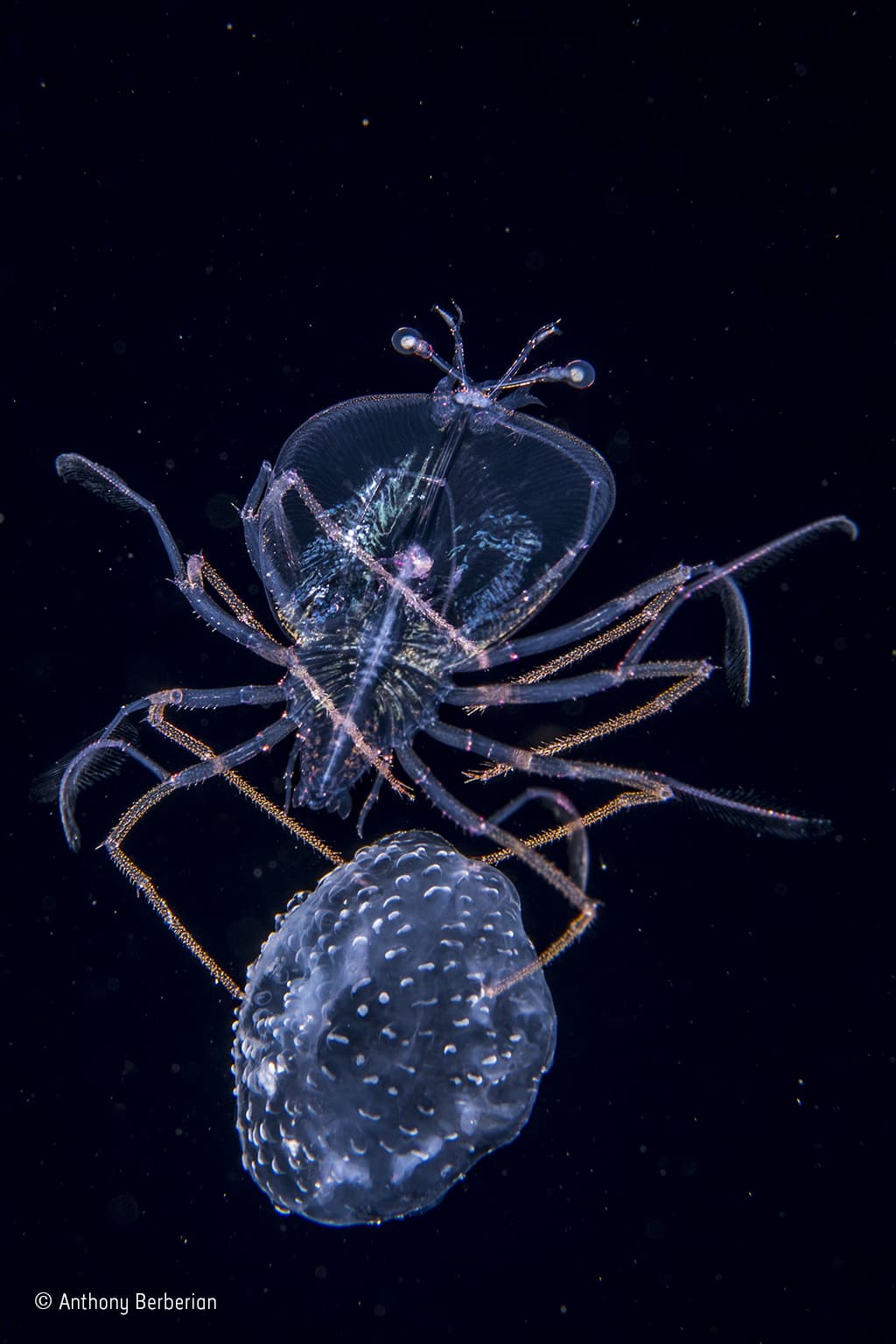
© Anthony Berberian/Wildlife Photographer of the Year 2017
In open ocean far off Tahiti, French Polynesia, Anthony regularly dives at night in water more than 2 kilometres (1¼ miles) deep. This lobster larva, just 1.2 centimetres across, with spiny legs, a flattened, transparent body and eyes on stalks, was at a stage when its form is called a phyllosoma.
Nikon D810, 60mm f/2.8 lens, 1/250sec at f/22 (−0.3 e/v), ISO 64, Nauticam housing + Nauticam SMC-1 super-macro converter; Inon Z-240 strobes.




